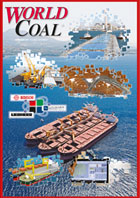Editorial comment
Last month, Google surprised much of the corporate world by announcing a new name: Alphabet Inc. Along with the new name came a new corporate structure with Alphabet acting as a holding company for the diverse array of interests – including self-driving cars, wearable devices and renewable energy – that had made up Google. The Google name will be retained for the core advertising and internet business and headed by a new CEO – Sundar Pichai. Larry Pary and Sergey Brin – Google’s founders – will take up the positions of CEO and President of Alphabet, respectively.
Register for free »
Get started now for absolutely FREE, no credit card required.
The aim of the restructuring is transparency: investors will more easily be able to see what the various parts of the giant company are making – or costing. In essence, Google’s founders were simply acknowledging reality: that the company had become a giant conglomerate of not-necessarily-related businesses, along the lines of Berkshire Hathaway or General Electrical.
Among these multifarious interests is translating Big Data and the Internet of Things into the domestic environment. Last year, Google purchased Nest Labs, the maker of WiFi-enabled thermostats and smoke alarms, for US$3.2 billion as the foundation for building its drive towards so-called ‘smart homes’ of connected data systems that are designed to make lives more comfortable and energy efficient.
But the Internet of Things is not only for the home: as the name suggests, it can be applied everywhere – including at mines.
“Two major themes – the ability to collect and integrate large volumes of data to produce information and then consume the derived information through touch-enabled mobile applications or ‘apps’ – is poised to transform mining technology and the in-pit management landscape,” writes Sean Dessureault of MISOM Technologies Inc. in this issue (“Put it all on the tablet”, pp. 43 – 48). Indeed, it is already transforming it.Much of the news from suppliers of equipment and technology to the mining industry this year has been in this field: the launch of Hexagon Mining and ABB’s Next Level mining concept are perhaps the most high-profile examples. Meanwhile, Rio Tinto has opened its Analytics Excellence Centre in Pune, India, which will analyse the huge volumes of data captured by sensors attached to its equipment, enabling the company to predict and prevent downtime events.
“Emerging information technologies, such as cloud computing, embedded logic, sensors, GPS systems, cyber security, Big Data, simulation modelling and 3D visualisations [...] can help companies reduce people, capital and energy intensity, while increasing mining intensity,” said Deloitte in this year’s ‘Tracking the Trends’ report. And it seems this message is now getting through.Mining had long been a follower when it came to the uptake of IT-related technologies. But that’s now changing – as the articles in our feature on fleet management systems illustrate. It may have been forced on the industry by the collapse of commodity prices (necessity is, after all, the mother of invention) but the advent of the ‘smart mine’ will make the whole industry a more productive and – more importantly – a much safer place.


